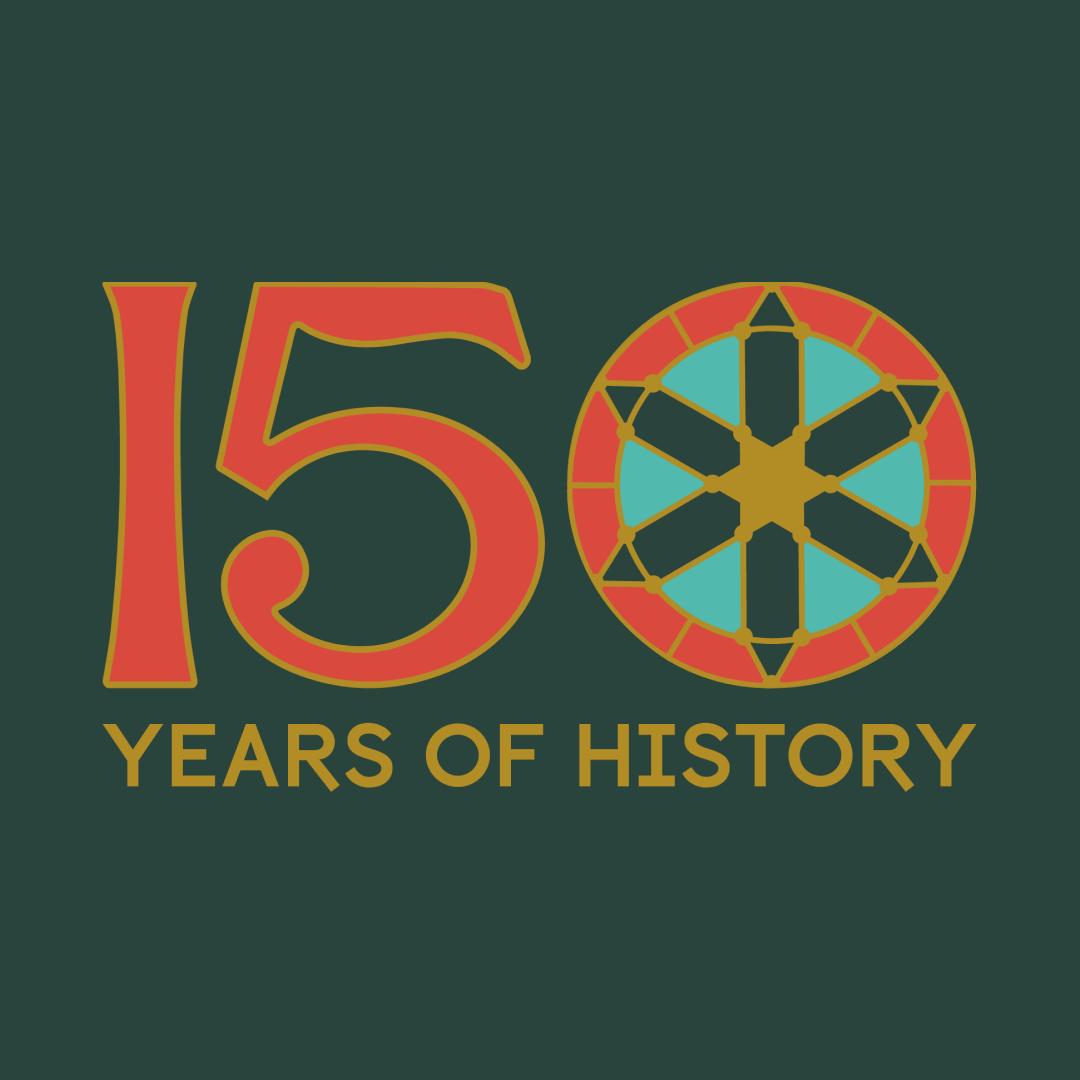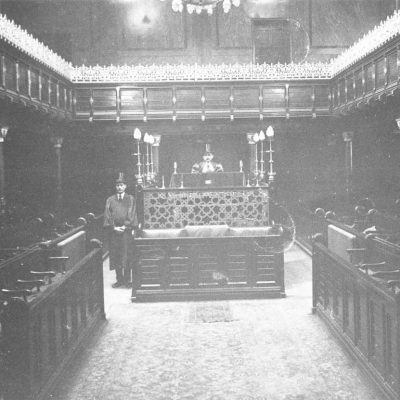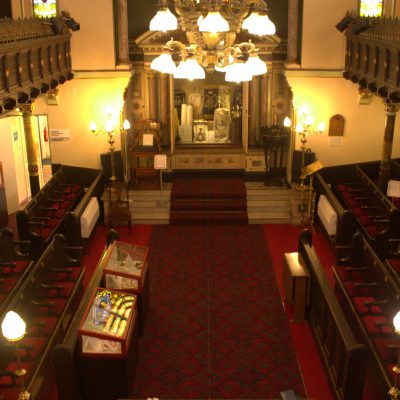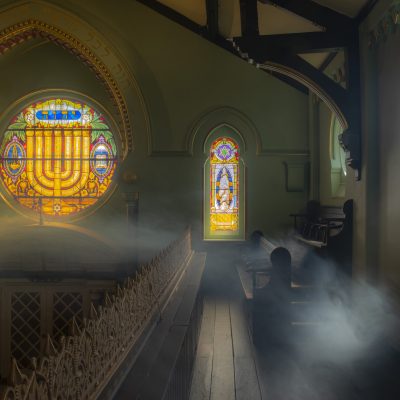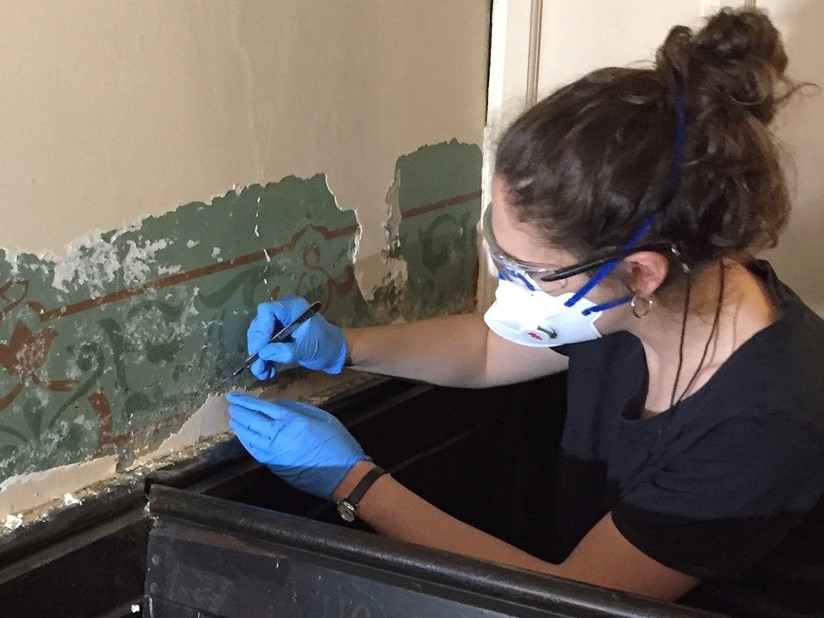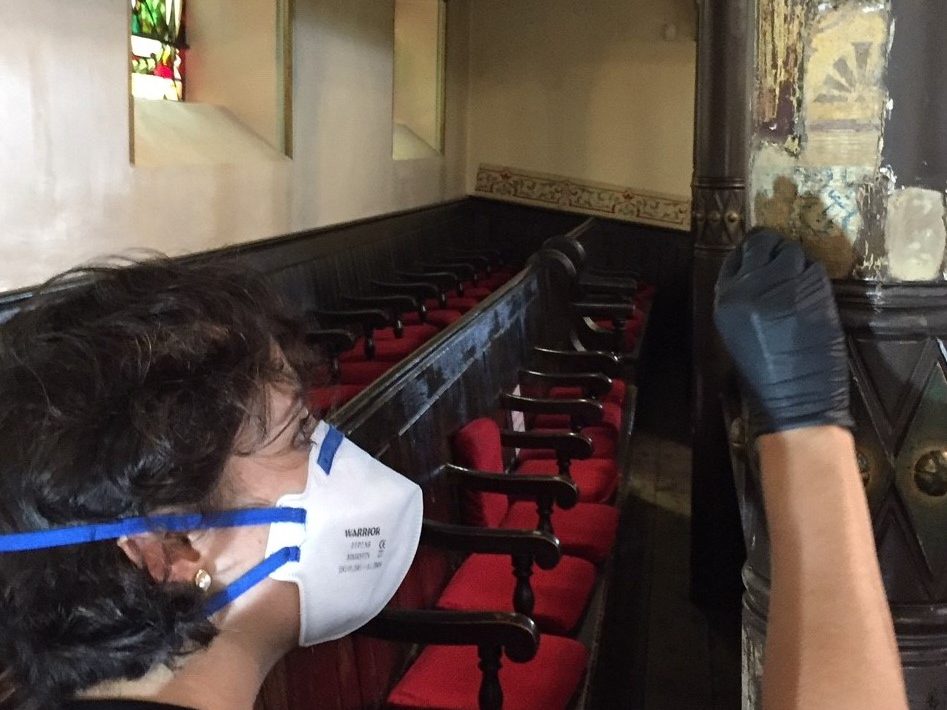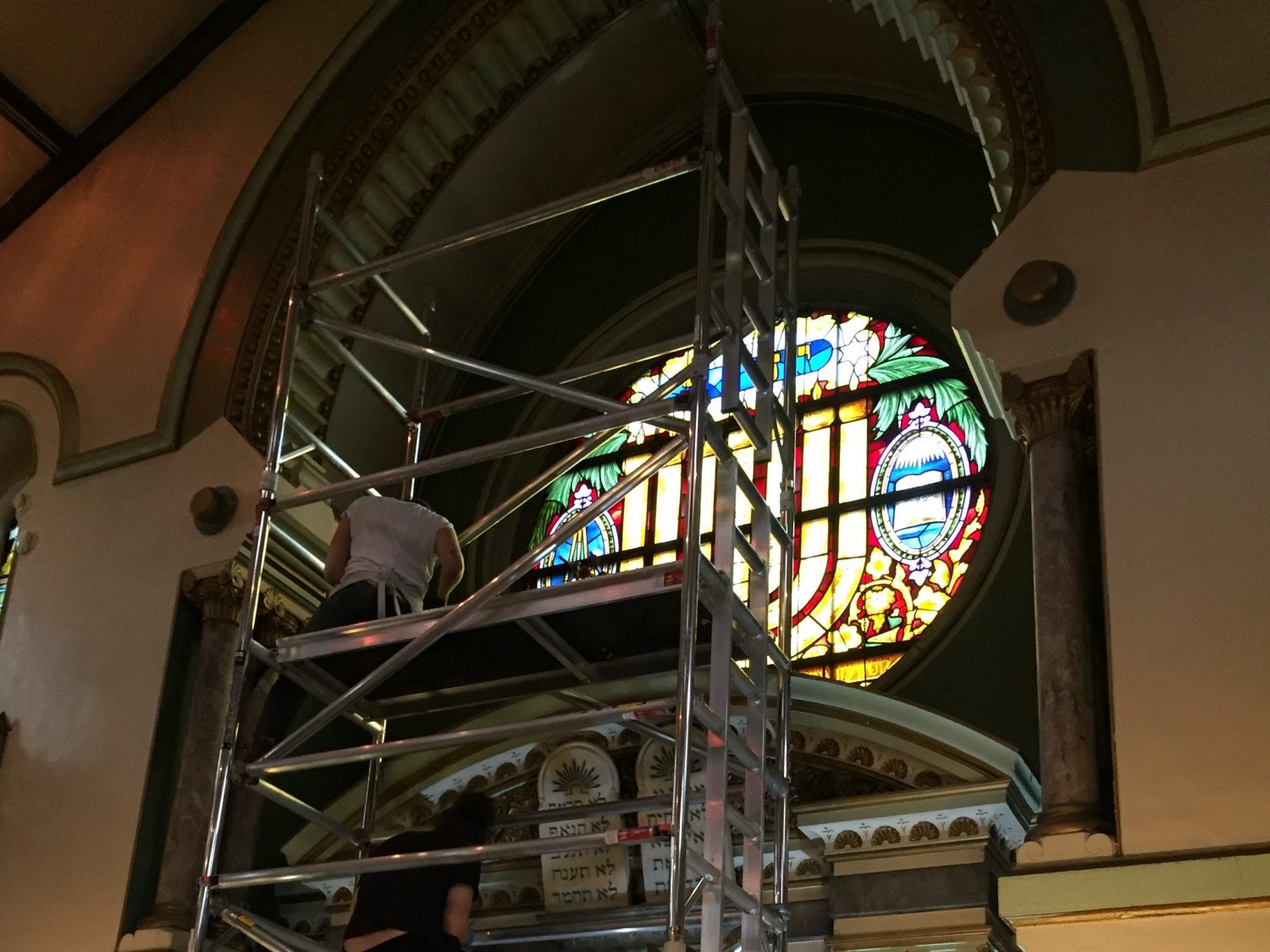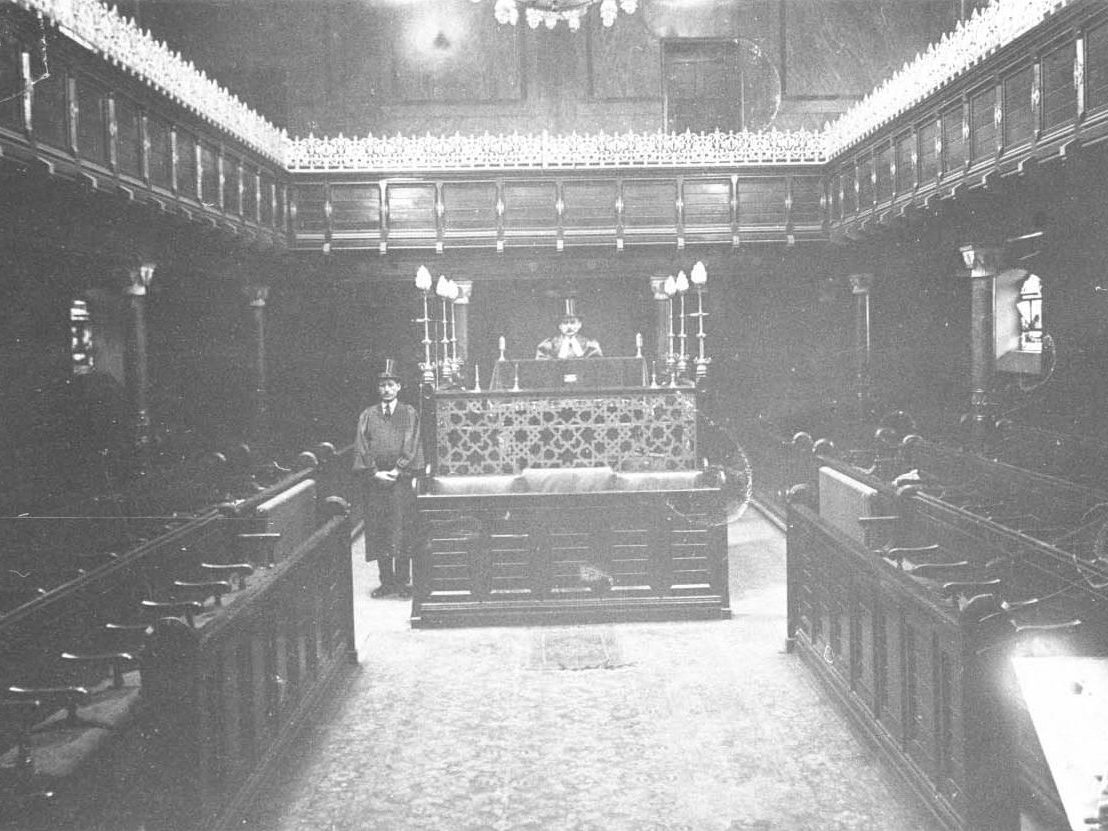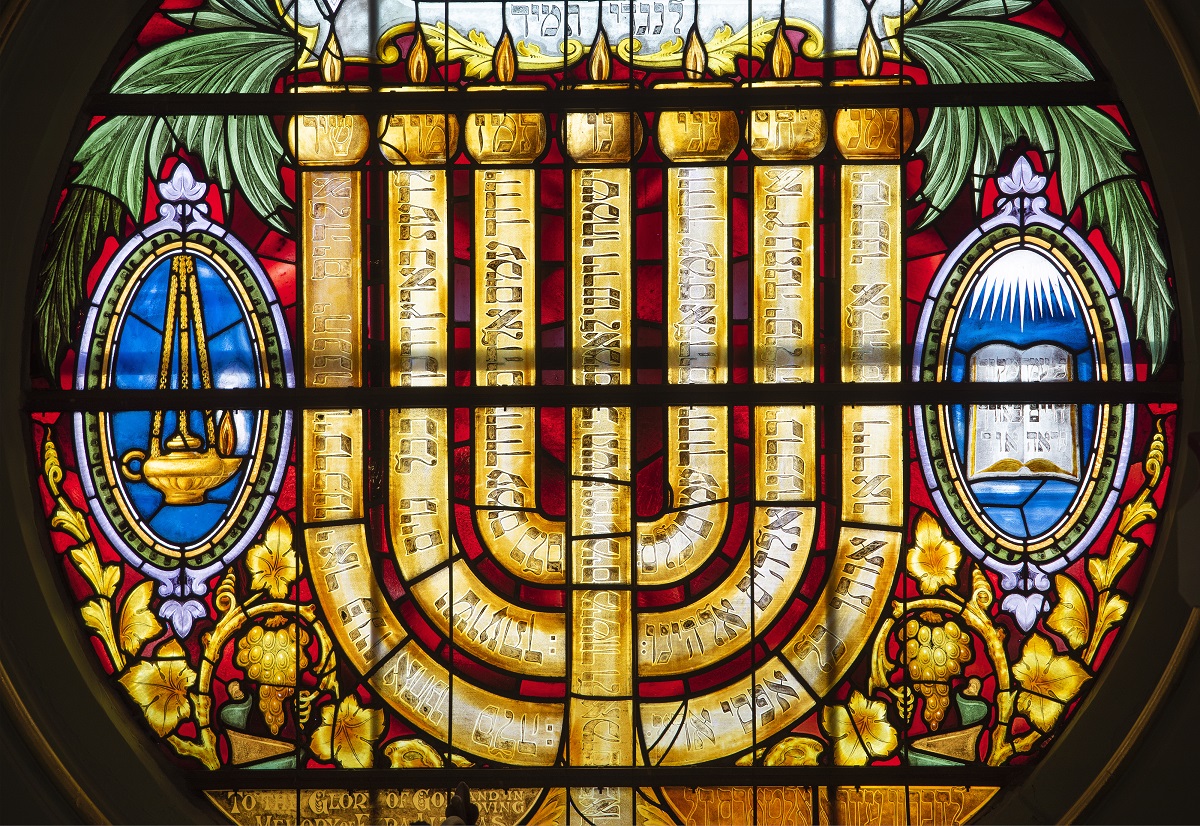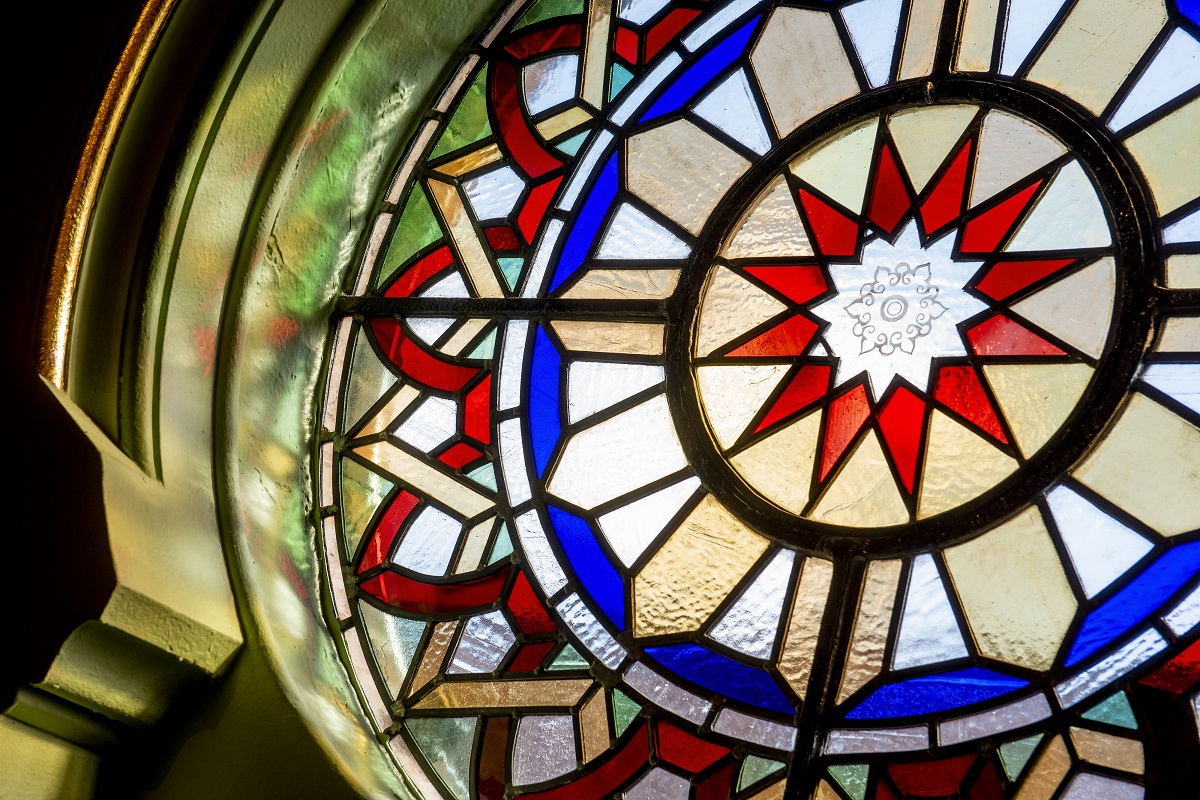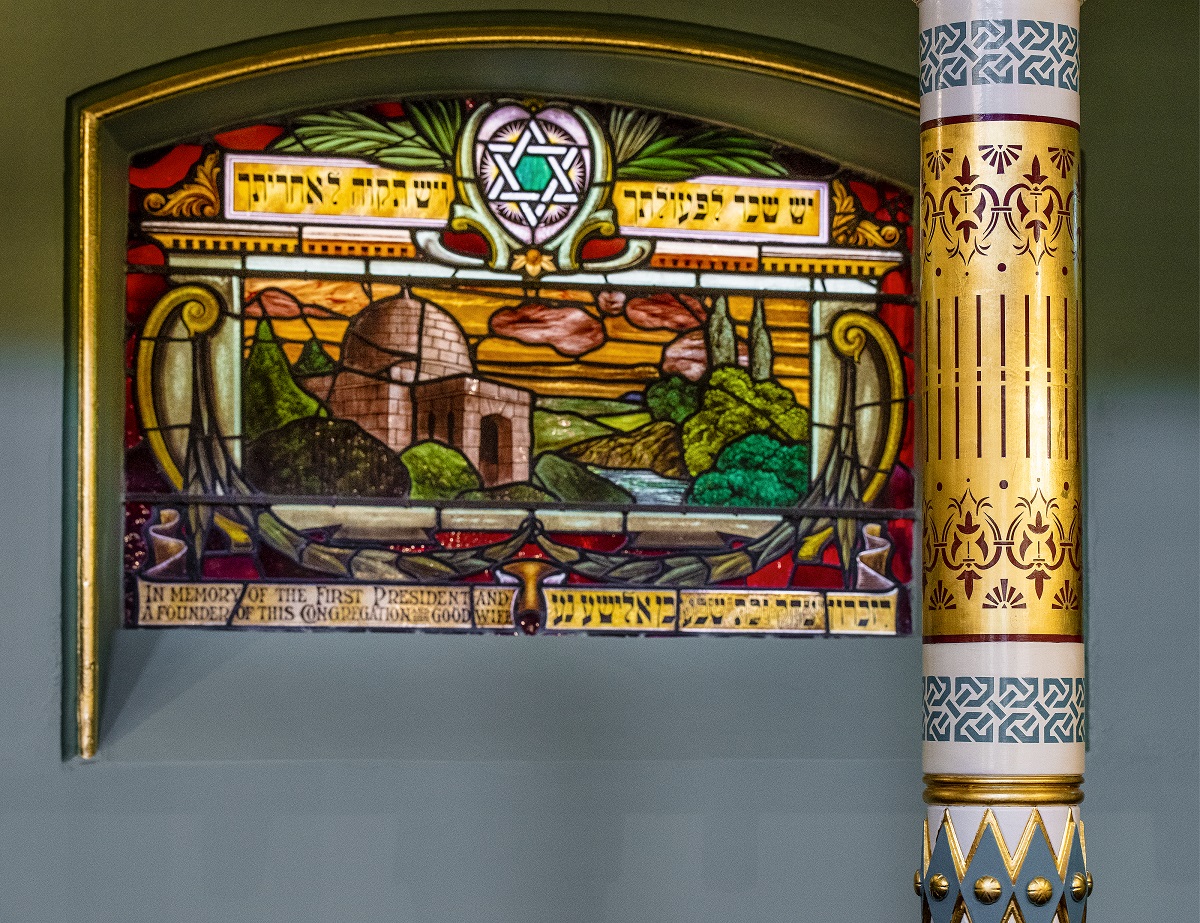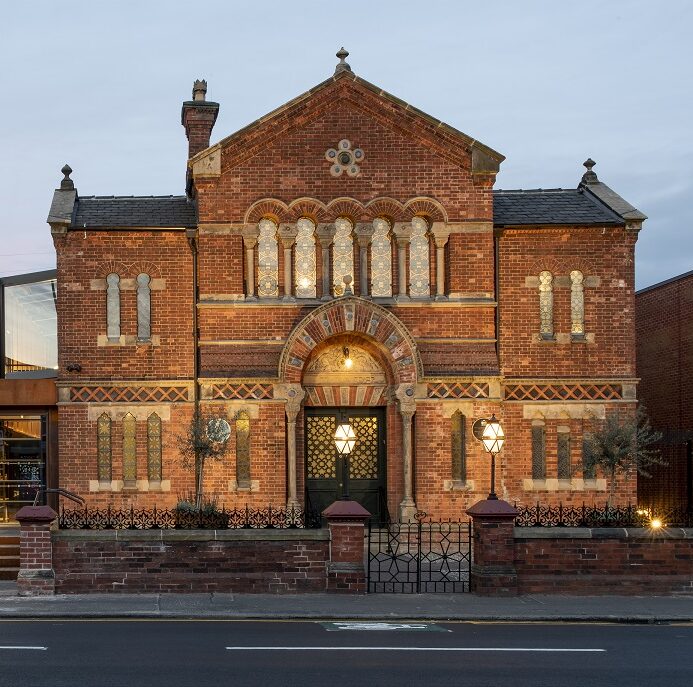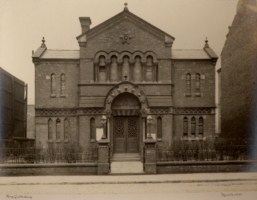 On 4 February 1872, Manchester’s growing Sephardi community met to discuss building the first Sephardi synagogue in the city (Sephardi Jews are those whose origins lie in Spain and Portugal). They commissioned Jewish architect Edward Salomons, known for his for his architecture in Gothic Revival and Italianate styles. When designing the synagogue, Salomons took inspiration from the Spanish and Portuguese origins of the synagogue members. Two years later our synagogue opened – on 6 May 1874. The Sephardi community thrived and by 1904 a second Sephardi synagogue was built in south Manchester.
On 4 February 1872, Manchester’s growing Sephardi community met to discuss building the first Sephardi synagogue in the city (Sephardi Jews are those whose origins lie in Spain and Portugal). They commissioned Jewish architect Edward Salomons, known for his for his architecture in Gothic Revival and Italianate styles. When designing the synagogue, Salomons took inspiration from the Spanish and Portuguese origins of the synagogue members. Two years later our synagogue opened – on 6 May 1874. The Sephardi community thrived and by 1904 a second Sephardi synagogue was built in south Manchester.
Over the years our synagogue has changed to reflect the needs of the congregation. In 1919 a plot of land was purchased at the rear of the synagogue to create a new succah (temporary hut constructed for use during the Jewish festival of Sukkot). Complete with a sliding roof, this ‘succah building’ became permanent and was used as a Congregational Hall. It is now our learning studio and kitchen.
In 1913 former Synagogue President, Ezra Altaras, passed away. His family paid for a large memorial window to commemorate him. This memorial window now sits proudly over the Synagogue’s Ark. Following this, other families paid for similar memorial windows on the ground floor. We now have over 40 magnificent stained-glass windows, many of which depict biblical scenes.
By the 1970s the congregation was moving out to the suburbs and the synagogue membership was starting to wane. The last wedding took place between Jeremy Colman and Deborah Hodari on 25th September 1977.
In 1974 a Jewish Heritage Committee was formed. Chair, Walter Wolfson and Vice Chair, Hymie Gouldman, saw the need to capture the disappearing history of Jewish migration and settlement in Manchester as the build heritage around lower Cheetham and Strangeways was being lost. The committee appointed local historian, Bill Williams, to write a book documenting Manchester’s Jewish history. The resulting book, ‘The Making of Manchester Jewry’ revealed the fascinating history of the first Jewish traders and settlers in Manchester from 1740 to 1875. The committee soon had the idea to create a museum. In 1976, the then president of our synagogue, Werner Mayer, suggested our building as a location for the new museum.
The Jewish Heritage Committee, which later became the museum’s first board of trustees, was formed and launched a public appeal to raise funds to convert the synagogue into a museum. Werner Mayer, Bill Williams, Ronni Forman, Shloimy Alman, Steven Fruhman and Rosalyn Livshin, lead the team in this effort. By 1982 the synagogue’s congregation moved to a converted school building on Moor Lane, Salford and conversion work began to turn the Spanish and Portuguese Synagogue into Manchester Jewish Museum.
After two years of conservation work our museum opened on Sunday 25 March 1984 with a temporary exhibition ‘The making of Manchester Jewish Museum’. A new permanent exhibition opened a year later. For almost 40 years the museum has served to teach people about Manchester’s rich Jewish social history – from the thousands of school groups we engage to the visitors that come through our doors.
In 2019 the museum temporarily closed to undergo a £6 million capital development including full renovation and restoration of the now Grade II* listed building. Conservation experts, historic painters and stained glass specialists were all involved in painstakingly researching and restoring the synagogue to its original decorative scheme, returning the synagogue to its former visual glory.
This beautifully restored synagogue now serves as both a major museum exhibit, offering visitors a unique insight into a Sephardi Jewish place of worship dating back to the 1870s, and also as a stunning performance space in which the museum will host live cultural events, gigs, talks, shows and concerts.


